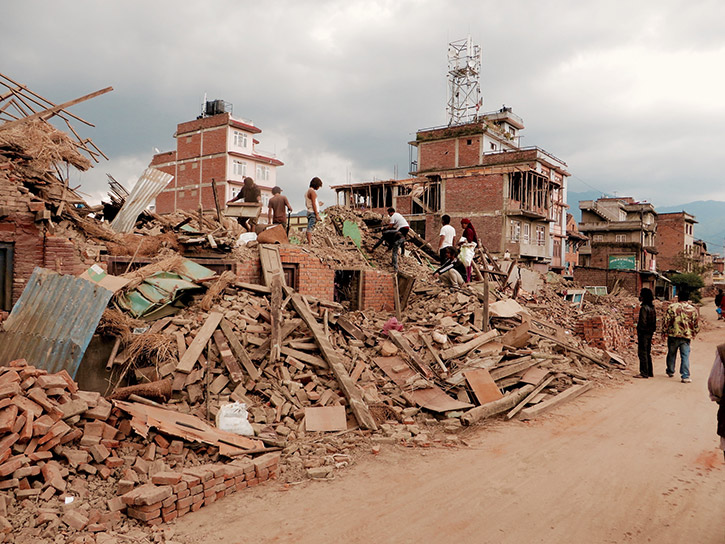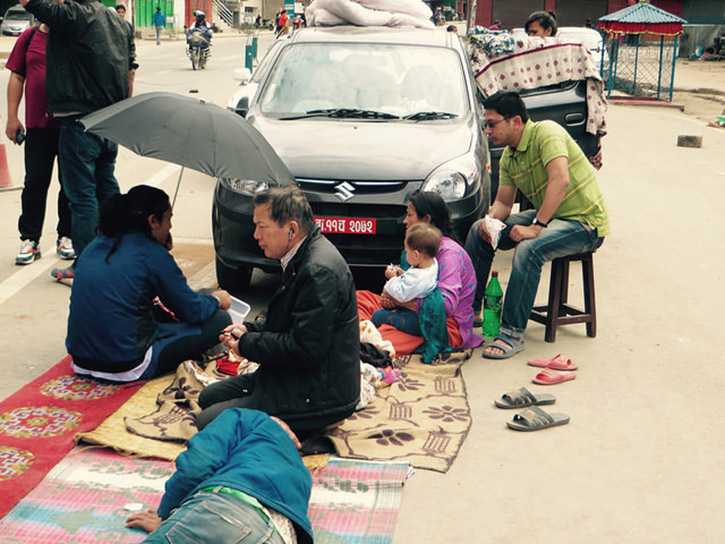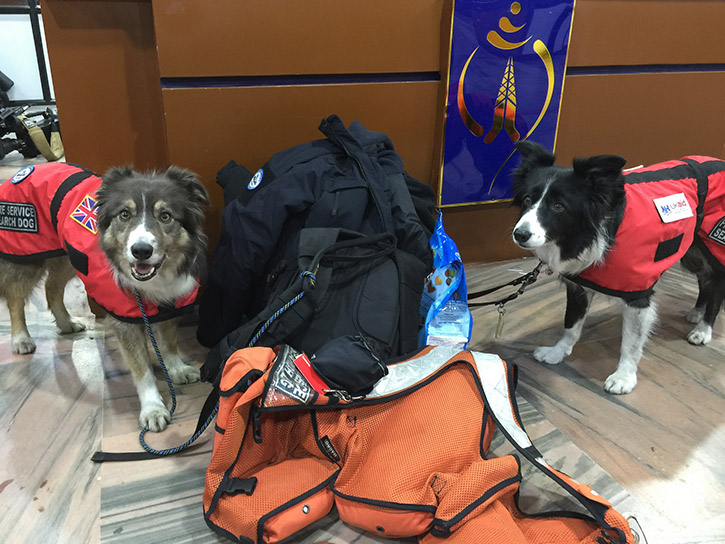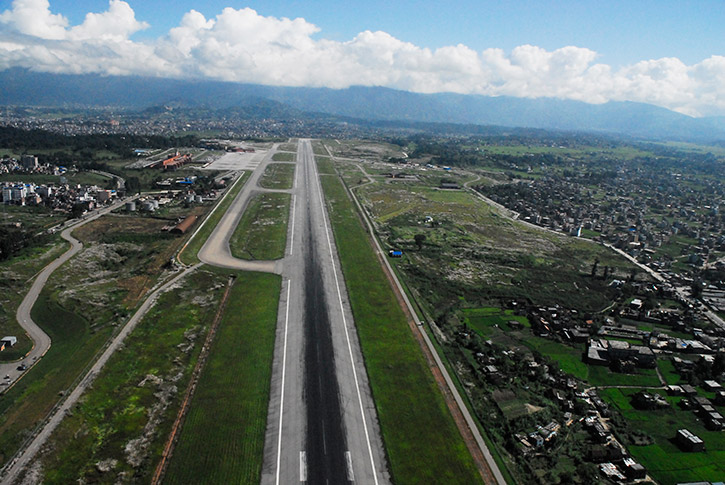Nepal earthquake: Free download of archive CRJ articles on preparedness and vulnerabilities in the region
Five days after the 7.8 earthquake that struck the Central and Western regions of Nepal, the Nepalese Government had recorded 4,358 deaths. However, this toll is under constant revision upwards. More than 8,000 people have been injured and eight million people are said to be affected.

Image from Nepal following the earthquake of April 25, 2015 (photo courtesy SIM Central and South East Asia; via Flickr, under Creative Commons Licence)
Some areas were still isolated after the quake, with rugged terrain and earthquake damage hampering access to Dhading and Gorkha in particular.
In its official update yesterday, the government said: “Up to 90 per cent of the health facilities in Ramechapp, Nuwakot, Sindhupalchowk and Gorkha have been severely damaged.” Immediate needs include food, shelter, WASH, as well as medical tents, medication, surgical kits and body bags.

People who have been left homeless or are too afraid to return to their homes are sleeping in the streets (photo courtesy SIM Central and South East Asia; via Flickr, under Creative Commons Licence)
Worried about aftershocks in the capital, many people are leaving the Kathmandu Valley and joining families in less-affected areas, leading to thousands of people queueing at bus stations.
The UN Resident and Co-ordinator for Nepal commented that fuel reserves are running low: “Cars and trucks are lining up at gas stations in town. All major roads are open for traffic. However, some side access roads remain blocked. Fuel is also needed to pump water from the ground and maintain services at hospitals and other critical facilities facing frequent power outages.
The UN also noted that while small grocery shops are open, large businesses and some banks remain closed; automatic banking machines are functional though replenishment is occurring at select areas at a slow pace.
The UN said that mobile networks in Kathmandu are functional, but network outages and overloads are occurring. Power throughout the city is limited with most households and offices mainly relying on generator power.
The international assistance operation has swung into operation, but one of the main difficulties now lies in getting aid into Nepal, reports CNN, which cites a bottleneck at the country’s only international airport Tribhuvan (TIA) as one of the problems in getting aid to those who need it.

UK search and rescue dogs in Nepal: The Department for International Development has deployed a team of more than 60 search and rescue responders and medical experts as part of a cross-government capacity surge to support the relief effort in Nepal (Picture: Jessica Lea/DFID)
In CRJ 8:4 (May 2013), Ratindra Khatri, a retired General with the Nepalese Army, sounded a warning about the airport’s role should a major earthquake occur in the country. He said: “TIA would be the only viable option for the transport of immediate relief materials and rescue workers after a high level disaster scenario. Unfortunately, the airport itself is vulnerable and in a critical condition.”
Khatri described how, on several occasions, cracks or holes in the runway had grounded flights until repairs could be completed, asking: “If a runway is weak and vulnerable in normal circumstances, what would happen if a large-scale earthquake struck Kathmandu or contiguous areas?” He recommended retrofitting the airport or finding an appropriate alternative as soon as possible.

CRJ file picture of Tribhuvan International Aiport, the hub for incoming emergency aid
In 2011 (CRJ 7:3) the same author wrote that a 6.9 earthquake on the Eastern Border of Nepal highlighted several issues with regard to response – many of which are echoed in this latest quake. He listed the difficulties of accessing remote communities in rugged terrain, poor infrastructure to support relief operations and warns of potential damage to Kathmandu, saying that greater emphasis on preparedness was required.
CRJ’s thoughts are with the people of Nepal, especially those directly affected by this earthquake, as well as all those who are working to assist them.